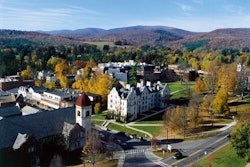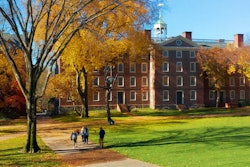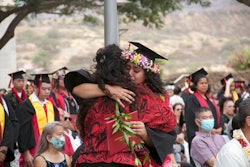U.S. Newsrooms Still a Long Way From Racial Parity
In some instances small increases can signal big gains — a one or two-point increase on the ACT, a mere quarter-point increase in interest rates. Yet, in the instance of newsroom diversity, a half a percentage point boost offers little to celebrate. “It’s pitiful that we continue to measure progress — or actually lack of progress — in terms of plus .04 percent or .09 percent a year, when what we really need to see are spikes of 3 percent or 4 percent,” said Herbert Lowe, president of the National Association of Black Journalists (NABJ), in a statement reacting to the results of the American Society of Newspaper Editors (ASNE) 27th annual Newsroom Census.
Lowe, a courts reporter at Newsday, is referring to the nearly half of one percentage point increase in diversity in U.S. newsrooms reported in the 2004 survey. This is the third consecutive year that the ASNE has reported a nearly half a percentage point increase in the number of minorities on staff at U.S. daily newspapers.
The consistent gain is a “good thing,” said Peter Bhatia, ASNE president, in a statement. “But the increase is at a snail’s pace, and the overall total is still woefully low.”
That total — 12.94 percent — is a long way from the percentage of minorities in the U.S. population, which is 31.7 percent. The disparity also indicates there is a long way to go to reach ASNE’s goal of achieving racial parity of newsrooms with their communities by 2025. Of the 1,417 daily newspapers surveyed, only 13 percent reflected the diversity of their circulation areas.
“As the economy improves and hiring increases, it is time for all of us in the industry to step up and move this number more quickly towards parity,” Bhatia said.
While the increase in the number of minority reporters, copy/layout editors and photographers is important to track, of greater concern to many is the dearth of minorities in decision-making positions in the newsroom.
According to the 2004 survey, minorities account for 10.5 percent of all supervisors, up slightly from 9.9 percent in 2003. As well, 20 percent of all minorities are supervisors, up from 19 percent in 2003. While Hispanics, Asians and American Indians all experienced an increase of 1 percentage point in the number of supervisors, African Americans experienced a 1-percentage point decline. According to the survey, nearly 1 out of 5 Black journalists are supervisors, 572 out of 2,938. In 2003, however, the survey reported there were 587 supervisors.
To assist newspaper officials in growing the number of top Black editors, NABJ has compiled a list of Black journalists in key editing roles at newspapers across the nation, and made the list available on its Web site <www.nabj.org>. The organization urges newsroom leaders to take advantage of the resource and help promote those on the list into high-profile, decision-making positions.
“What this list does is take away any excuse for any newspaper that insists it is serious about adding more Black journalists to its editing ranks,” said Bryan Monroe, NABJ’s vice president for print.
The slight gain in supervisory positions among Hispanics, Asians and American Indians, though encouraging, still brought attention to the overall underrepresentation.
“We are heartened that Asian Americans continue to play a part in today’s newsrooms, but we need to put more emphasis on making sure that Asian Americans have a role in making important daily newsroom decisions ranging from the types of stories that get into newspapers to who gets hired at these papers,” said Mae Cheng, president of the Asian American Journalists Association (AAJA) and assistant city editor at Newsday.
Matt Kelley, a member of the Native American Journalists Association (NAJA) and a reporter with the Associated Press in Washington, pointed out that American Indians still remain the most underrepresented group in American journalism. “Having so few of us in the newspaper business — including none in the Washington press corps — is unconscionable,” Kelley said.
Officials with the National Association of Hispanic Journalists (NAHJ) expressed concern in the lack of net growth in the number of Latino journalists working at English-language dailies. NAHJ leaders pointed out that the survey’s reported increase to 2,258 Latino journalists, up from 2,212 the previous year, included journalists hired last year for two newly launched Spanish-language dailies — Belos Al Dia in Dallas and Knight-Ridder’s Diario La Estrella in Fort Worth.
“Given all the attention newspaper chains are devoting to new publications geared to the Latino community, we expected a big increase in the numbers of Latinos now more than ever,” said Juan Gonzales, president of NAHJ in a statement.
In order to more accurately reflect the newsroom make-up of mainstream organizations, NAHJ has urged ASNE to breakout the number of Latinos working both in English-language and Spanish-language dailies that are owned by mainstream companies in future surveys.
Members of NABJ, AAJA, NAHJ and NAJA will team up to address the issue of diversity in the newsroom next month at the UNITY 2004 convention in Washington, D.C. The event is the third joint gathering of the UNITY Alliance Associations, which represents over 7,000 journalists of color.
For more information about the ASNE annual survey, visit the organization’s Web site at <www.asne.org>.
© Copyright 2005 by DiverseEducation.com





















